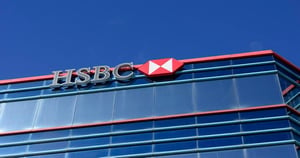Summit Therapeutics Inc. (NASDAQ: SMMT), a biopharmaceutical leader based in Miami, Florida, has become a focal point for investors keen on the biotechnology sector. With a market capitalization of $13.53 billion, Summit Therapeutics is making waves with its promising pipeline, most notably its lead candidate, ivonescimab. This bispecific antibody, currently in Phase III trials for non-small cell lung cancer, could serve as a game-changer in immunotherapy, blending PD-1 blockade with anti-angiogenesis capabilities.
Summit’s current stock price of $18.215 is down by 0.31%, but the 52-week range shows significant volatility, spanning from $6.89 to a high of $36.70. Despite this recent dip, the company’s stock presents a compelling opportunity for substantial gains, with an average target price set at $37.74 by analysts. This represents a potential upside of 107.19%, positioning Summit as a noteworthy contender in the biotech investment landscape.
A deeper dive into Summit’s valuation metrics reveals some challenges. The company currently reports a negative forward P/E of -47.83, indicating anticipated losses in the near future as it continues to invest heavily in its research and development efforts. Additionally, the company’s Return on Equity (ROE) is at a concerning -123.93%, highlighting the strain on profitability as it navigates through its developmental phases without any immediate revenue growth or net income reported.
From a technical perspective, Summit’s stock is trading below its 50-day moving average of $23.33 and slightly above its 200-day moving average of $20.31. The Relative Strength Index (RSI) stands at 42.38, suggesting the stock is neither overbought nor oversold, which could appeal to technical traders seeking potential entry points.
Despite these financial hurdles, Summit Therapeutics has garnered a strong backing from analysts, with 10 buy ratings and zero hold or sell ratings. This unanimous vote of confidence underscores a bullish sentiment among market experts, driven by the promising prospects of ivonescimab and the company’s strategic focus on developing therapies that are not only innovative but also considerate of patients and caregivers’ needs.
The company’s financial health, however, poses a significant concern. With free cash flow at a negative $104.8 million and the absence of a dividend yield, Summit’s current focus remains firmly on reinvestment and growth rather than shareholder returns. This strategy aligns with its long-term vision but requires investors to exercise patience and risk tolerance, given the inherent volatility and speculative nature of biotech ventures.
As Summit Therapeutics continues to advance its clinical trials and expand its pipeline, the potential for breakthroughs in treatment and subsequent market growth remains high. Investors with an appetite for high-risk, high-reward opportunities may find Summit’s innovative approach and ambitious targets an attractive proposition. However, due diligence and a careful assessment of individual risk tolerance are crucial as the company navigates its path toward commercialization and profitability.


































